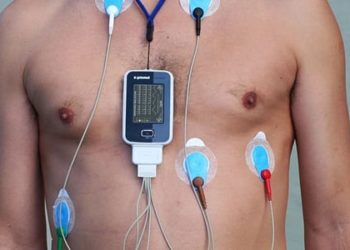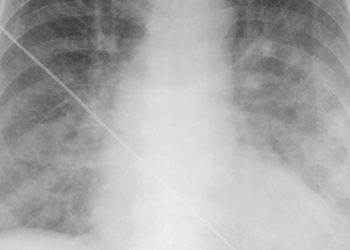2 Minute Medicine Rewind February 15, 2016
Acute lymphoblastic leukemia (ALL) is the most common childhood malignancy. While the prognosis associated with this disease has improved, children treated with CNS-directed chemotherapy are at risk of developing neurocognitive deficits. In this prospective cohort study, neuropsychosocial assessments were performed in 339 patients treated with CNS-directed chemotherapy to evaluate long-term neurocognitive outcomes in pediatric survivors of ALL. All patients received triple intrathecal chemotherapy, with doses varying by disease-associated risk. For children =<3.5 years old, the Bayley Scales of Infant Development were administered. Patients age 6 years and older completed a computerized sustained attention measure, yielding scores for omissions, reaction time, variability, vigilance and risk-taking. Learning, memory and academic skills were also assessed in older children. Caregivers completed standardized rating of the impact of attention in daily life. Researchers found that at 2 years of follow-up since treatment, patients did not overall significantly differ from normative expectations on measures of global intelligence, academic skills, or learning and memory. However, there was a significantly higher frequency of below average performance compared to normative expectations on measures of sustained attention. Specifically, 50%, 45% and 41% of patients had below average performance on measures of attentiveness, omissions and variability, respectively (p<0.001). The frequency of learning problems among patients, as reported by caregivers, was also higher than expected (p = 0.002). The effects of CNS-directed chemotherapy on attention, specifically attention variability, were magnified in children treated at a younger age (OR 2.1, 95% CI 1.0 to 4.2, p = 0.049). Younger children also had increased caregiver-reported learning problems (OR 1.9, 95% CI 1.0 to 3.4, p = 0.036). Furthermore, children that received standard to high-risk treatment were more likely to perform at a level below average on measures of intelligence (OR 0.3, 95% CI 0.1 to 0.6, p = 0.002), working memory (OR 0.4, 95% CI 0.2 to 0.9, p = 0.035), processing speed (OR 0.1, 95% CI 0.0 to 0.6, p = 0.008), learning (OR 0.4, 95% CI 0.2 to 1.0, p = 0.047) and various measures of academics. Nonetheless, in comparing neurocognitive assessments conducted at the time of treatment induction to those performed 2 years after treatment, patients demonstrated significant improvements in intelligence (p = 0.04). During this time, there were also no significant changes in measures of working memory, processing speed or memory. This study therefore shows that ALL survivors remain at an elevated risk for attention and learning problems following the completion of CNS-directed chemotherapy, where age at diagnosis and chemotherapy dosing may further impact neurocognitive development in survivors of childhood ALL.
The incidence of cervical cancer has been greatly reduced by cervical screening with cytology, where the importance of identifying abnormalities in cervical squamous cells has been widely acknowledged. The risk of malignancy associated with abnormalities in cervical glandular cells, however, is less clear. In this large population-based cohort study, the results of cervical cytology screening in 3,024,340 women living in Sweden between 1980-2011 were evaluated as part of characterizing the prevalence and long-term risk of invasive cervical cancer after the identification of atypical glandular cells (AGC). Researchers found that the cumulative incidence of invasive cervical cancer among women with AGC increased dramatically in the first 6 months of follow-up, and increased steadily during follow-up, reaching 2.6% at 15.5 years (95% CI 2.3% to 2.9%). The cumulative incidence of adenocarcinoma among women with AGC reached 1.9% at 15.5 years, which was considerably higher than that seen in women with high-grade squamous intraepithelial lesions (HSIL) or low-grade intraepithelial lesions (LSIL). Compared to women with normal cytology results, the presence of AGC was associated with a significantly increased risk of cervical cancer from 0.5 years (incidence rate ratio 24.1, 95% CI 19.1 to 30.5) to 15.5 years (incidence rate ratio 4.8, 95% CI 2.7 to 8.5) of follow-up. In terms of prevalence, among women with AGC, 1.4% had prevalent cervical cancer detected within 6 months. The most prevalent cancers with AGC were adenocarcinomas and the highest proportions of prevalent cervical cancer at diagnosis of AGC were in women age 30-39 years of age (p<0.001). This study therefore shows that AGC found at cervical cytological screening is in fact associated with a high and persistent risk of cervical cancer, for up to 15 years, particularly for cervical adenocarcinoma.
Heart failure (HF) affects approximately 5.8 million patients in the United States, and is associated with high mortality and increased use of healthcare resources. Discontinuities and a lack of post-acute care monitoring can increase the use of healthcare resources by way of unplanned readmissions and/or worsening morbidity. In this randomized controlled trial, 1437 patients were randomized to receive remote patient monitoring or receive usual care to determine whether such a care transition intervention could reduce 180-day all-cause readmissions in patients hospitalized with HF. The intervention consisted or pre-discharge HF education, regularly scheduled telephone coaching and daily home telemonitoring of weight, blood pressure, heart rate and symptoms by a registered nurse. Researchers found that the receipt of remote patient monitoring did not significantly decrease rates of 180-day all-cause readmissions (HR 1.03, 95% CI 0.89 to 1.19, p = 0.73). There was also no statistically significant difference in 30-day all-cause readmissions or 180-day mortality. This study therefore shows that among patients hospitalized for HF, combined health coaching telephone calls and telemonitoring did not reduce 180-day readmissions.
Six months following a large outbreak of the Zika virus (ZIKV) in Brazil, there has been an unusual increase in the number of newborns with microcephaly, strongly suggesting such an anomaly may be associated with congenital ZIKV infection. In this case series study, the ocular findings of 29 infants with microcephaly from mothers presumably infected with ZIKV during pregnancy were described. All infants underwent an ocular external examination and indirect ophthalmoscopy. Of the 29 mothers included in the study, 23 (79.3%) had ZIKV signs and symptoms during pregnancy, including cutaneous rash (72.4%), fever (44.8%), arthralgia (37.9%), headache (17.2%) and itch (13.8%). All mothers denied signs or symptoms of conjunctivitis. Among the 23 mothers who reported symptoms during pregnancy, 18 (78.3%) reported ZIKV symptoms during the first trimester of pregnancy. Of the 29 infants included in the study, 10 had ocular abnormalities, 7 of which had bilateral findings; a total of 17 eyes were affected. Ocular abnormalities included focal pigment mottling and chorioretinal atrophy in 11 of the 17 eyes (64.7%). Severe chorioretinal atrophy was also observed and involved the macula in 3 eyes (17.6%), the nasal retina in 3 eyes (17.6%), and the paramacular area in 5 eyes (29.4%). Other ocular findings included optic nerve abnormalities in 8 eyes (47.1%), lens subluxation in 1 eye (5.9%) and bilateral iris coloboma in 2 eyes (11.8%). This study therefore shows that congenital infection due to presumed ZIKV exposure is associated with vision-threatening findings, which may include bilateral macular and perimacular lesions as well as optic nerve abnormalities in the majority of cases.
Malnutrition in children can be caused by a lack of food, illness and poor child feeding practices. In the event of infection, nutritional supplementation plays an important role in recovery, forming part of the World Health Organization’s (WHO) recommendations for children faced with acute illness. In this randomized controlled trial conducted by Médecins Sans Frontières (MSF), 2202 non-malnourished children age 5 years and under received ready-to-use therapeutic food (RUTF), micronutrient powder (MNP), or no nutritional supplementation for 2 weeks to determine whether the incidence of malnutrition could be reduced through these interventions. These children were receiving treatment for malaria, diarrhea or lower respiratory tract infections, and follow-up was limited to 6 months. The primary outcome was a negative nutritional outcome (NNO), defined as a weight-for-height z-score <-2, mid-upper arm circumference (MUAC) <115 mm, or nutritional edema. Researchers found that the incidence of a first NNO event was 0.143, 0.185 and 0.213 events per year for the RUTF, MNP and control groups respectively, during the 6-month follow up period. Compared to the control group, the RUTF group had a significant reduction in the incidence of NNOs with 0.070 events per year, corresponding to a 33.3% reduction (p = 0.037). Compared to the MNP group, however, there was no significant difference in NNO incidence (p = 0.200). The incidence of NNOs in the MNP group, 0.028 events per year, also did not significantly differ from that seen in the control group (p = 0.413). With respect to disease-related morbidity and mortality, researchers found that patients in the MNP group had fewer new malaria episodes compared to the control group (p = 0.001). Rates of new diarrhea episodes between groups did not significantly differ. This study therefore shows that a 2-week nutritional supplementation program with RUTF in non-malnourished children with malaria, lower respiratory tract infection or diarrhea, can be effective in preventing malnutrition.
Image: PD
©2016 2 Minute Medicine, Inc. All rights reserved. No works may be reproduced without expressed written consent from 2 Minute Medicine, Inc. Inquire about licensing here. No article should be construed as medical advice and is not intended as such by the authors or by 2 Minute Medicine, Inc.









